
Five quizzical faces and a mumbling bike helmet: how Livall «BH51M Neo» fares on the phone
This city helmet has more than just a flashing light and other safety features. It’s also a type of media centre with hands-free built in. At face value, all that sounds great, but I still wouldn’t recommend you dial into a team call with the Livall «BH51M Neo».
I’m all for helmets being able to do more than just protect your head. After all, at the core, that’s its basic job. But increasingly, models also offer additional features. They excel at lighting, built-in indicators or fall detection. That being said, I’ve never come across as long a list of features as with the Livall «BH51M Neo». It boasts rear light, indicators, a hands-free feature, stereo sound with 2 × 0.5 watt, navigation, SOS alarm, walkie-talkie, damage warning, brake light and remote control. My car can’t even do all of that. At least on paper.
And yet, when I dial into our daily team meeting with the helmet on, full of optimism and without any notice, I’m still disappointed. You can see and hear the befuddling result in the video above. If that doesn’t put you off because, like me, you don't really want to make phone calls on the bike, you’ll want to read on for the full story about the Livall BH51M Neo. It does also have good qualities and smart features. Let's get stuck in. Or unpack it. Because at the beginning it’s as yet cool, calm and collected and the editor is still hopeful.
Unboxing and a rollercoaster of emotions
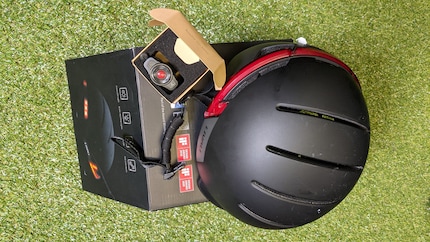
Emerging from stylish, award-studded packaging is a matt black helmet. What impresses me first is the back of it. The LED bar of the indicator, which runs in arrows to the left and right, looks great and stands out in the traffic when shoulder to shoulder with Teslas, Audis and BMWs.
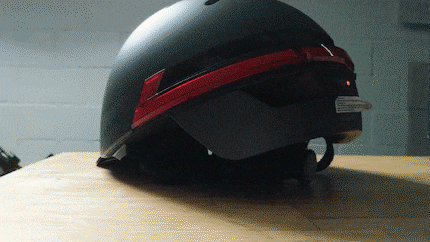
I’m not such a fan of the front. It’s a short visor made of hard plastic with a grilled air inlet over it and ventilation slots running across the way, which give the helmet all the elegance of a loaf sliced into five. There isn't much light at the front – the two «position lights» are hidden behind the ventilation grille.

But once again, the remote control seems to be a highlight. Compact and with lots of easy-to-find buttons, it’s in line with the fancy multimedia features the helmet promises. More on that later. But first of all, let’s look at classic helmet issues.
Just a helmet
All the technology is packed into a fairly standard helmet that weighs 490 grammes. It has the usual hard plastic outer shell glued to the standard cushioning EPS shell underneath. In my case, it’s not been stuck to the right side of the helmet very well, as there’s a gap between the two layers.

I’m impressed with the padding on the inside, and the Livall BH51M Neo can be conveniently attached using the standard rotating mechanism. There aren’t any other adjustment options. It goes without saying that the helmet meets the mandatory EN 1078 standard. Testing includes flat impact at 19.5 km/h and impact on a «roof-like surface», i.e. at an angle, at 16.5 km/h. But in real life falls, you can often experience strong rotational forces, which many manufacturers counteract with systems such as MIPS or WaveCel. I consider this an important feature, and it’s something that the Livall test helmet doesn’t offer.
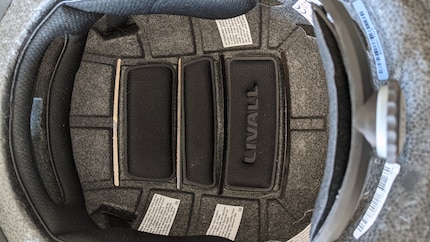
Charging and pairing with the app
The charging cable is where we start getting back into fancy territory. It can be magnetically docked like on a MacBook. On the one hand, I like it. But it also means you have to rely on one particular charging cable. So, if you lose it, you have to order a new one. I'm glad my Lumos Ultra has a normal USB-C cable, as this is the helmet the Livall is measured against. It might not be quite as chic, but I’d rather the potential breakage risk than a cable I'm not allowed to lose under any circumstances.
Before its first trip, the Livall needs to be charged up. The «friendly reminder» under the charging socket makes me feel a bit annoyed. Unfortunately, you can’t remove the sticker that reminds you to charge up and pair the helmet without making a mess. Above, there’s the magnetic dock and beautifully incorporated lights; below, a white eyesore. Grrrrr.
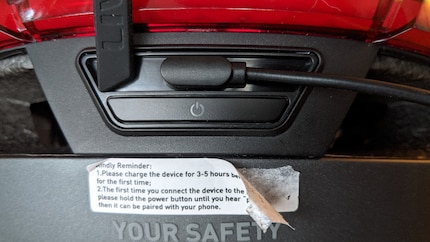
When the helmet battery is fully charged, it should last about five hours. I’m intentionally using the word «should» because this can, of course, vary depending on the temperature and how you use it. Some users, for instance, express their disappointment about the battery life in product reviews. The good news is, the helmet can easily be paired and configured in the Livall app. That’s also where you go to check the battery status. I've also noticed that it can change quickly. Every time the helmet indicates, the loading bar temporarily loses a line that then reappears. This main feature seems to zap a lot of power. The positive thing is that the app calculates the energy reserve almost in real time.
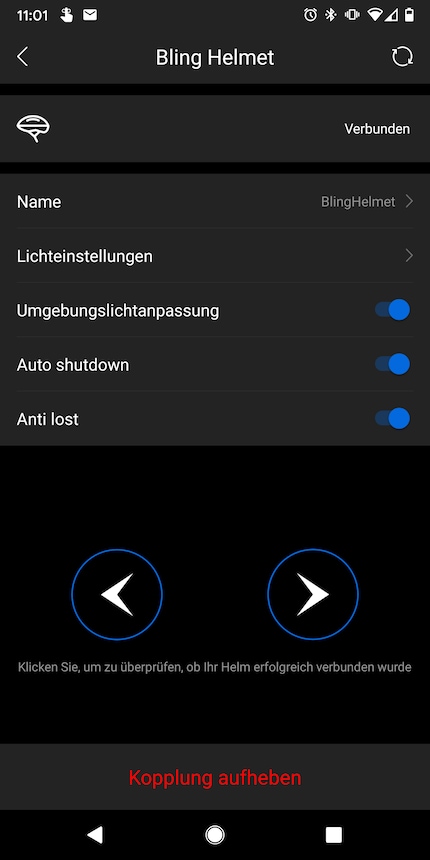
You can also quickly integrate the round cell battery-powered remote control, allowing its data to be transmitted. The app is OK, but the setting options are limited. You don’t get a continuous light with Livall. However, offering this kind of feature would probably reduce the battery life significantly. I can choose between flashing, which is more of a flash light; «standard light», which is normal flashing; and «flowing» flashing. Then the light spreads out from the centre to both sides. The interval can’t be altered, and the light flashes roughly every three seconds. I’d like to have had more of a say in that. In return, I’d have done without groups, community feed and route tracking.
But the Livall BH51M Neo does do some things very well. For instance, the red brake light is reliable. Meanwhile, the helmet can sense ambient brightness and flash on and off when the light level is low. It can also turn off automatically after a few minutes of inactivity and give a warning if I move away from the helmet or lose my (paired) smartphone. Generally speaking, the helmet needs to be kept in the loop a lot.
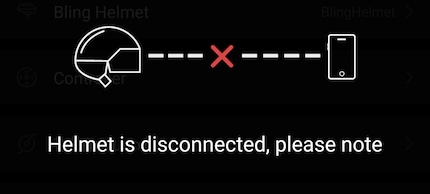
Time to tackle traffic
«Power on.» The helmet lets the world know every time it’s ready to go, only to immediately announce it’s found the remote control: «connected.» These are instances that get on my nerves. As it also flashes when it connects, a light would give me enough information about the current relationship status between my remote control and mobile. However, I do like the stereo speakers and the indicator sound, which I can hear subtly in the ear linked to the direction I’m going in. Listening to music isn’t much fun because of the sound quality, but I don't want to do that in traffic anyway. I’d rather follow navigation or phone someone. This isn’t something that fails due to the speakers but because of the microphone. It culminates in the delirious debauchery you saw above. Even if you keep the microphone out of the wind, voice quality is still muffled. As a bike rider, I see it as a good thing that my ears stay free and there’s nothing to dampen traffic sounds. On my side, all conversations are clear and easy to understand. Unfortunately, for those on the other end of the call, they can only catch clear conversation when I’m at a standstill.
Remote control: more than an indicator
If you ride in a group with other Livall users, you can talk to them via a radio button on the remote control. I couldn't try that out, but it should sound similar to making a phone call. Even if I could easily do without it and the photo feature, I do think the remote control works well. It's compact enough to reach every button with your thumb. The buttons are so well set apart that I can use them without looking. And I can easily adjust the volume or select songs to listen to. Unfortunately, you can’t assign buttons individually. This is also an area where the app could provide more options.
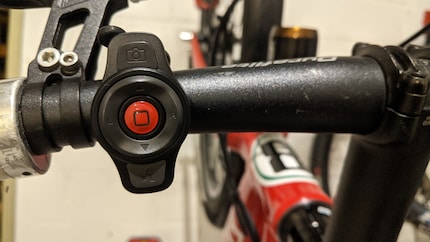
Verdict: smart light, poor microphone
Although it’s comfortable and boasts some smart features, the Livall BH51M Neo hasn’t won me over completely. I’m actually not that bothered about the poor phone quality. What I would have liked is a version with MIPS and full power over the remote control and light settings. In this regard, my Lumos Ultra offers me more freedom without the battery immediately dying on me. When it comes to processing quality, it’s also a step ahead. In fact, it’s a pity, because I think the rear and brake lights on the Livall are great. Unfortunately, it just doesn't seem to have been thought out enough yet.

Simple writer and dad of two who likes to be on the move, wading through everyday family life. Juggling several balls, I'll occasionally drop one. It could be a ball, or a remark. Or both.
These articles might also interest you

Product test
Light helmet "Faro" from Unit1: The automotiveization of the bike world is advancing
by Michael Restin
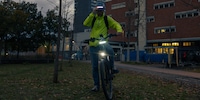
Product test
As bright as a lighthouse: with Unit1, nobody will miss me anymore
by Martin Jungfer

Product test
Alpina Brighton helmet – visibility, safety and neck training in one
by Martin Jungfer